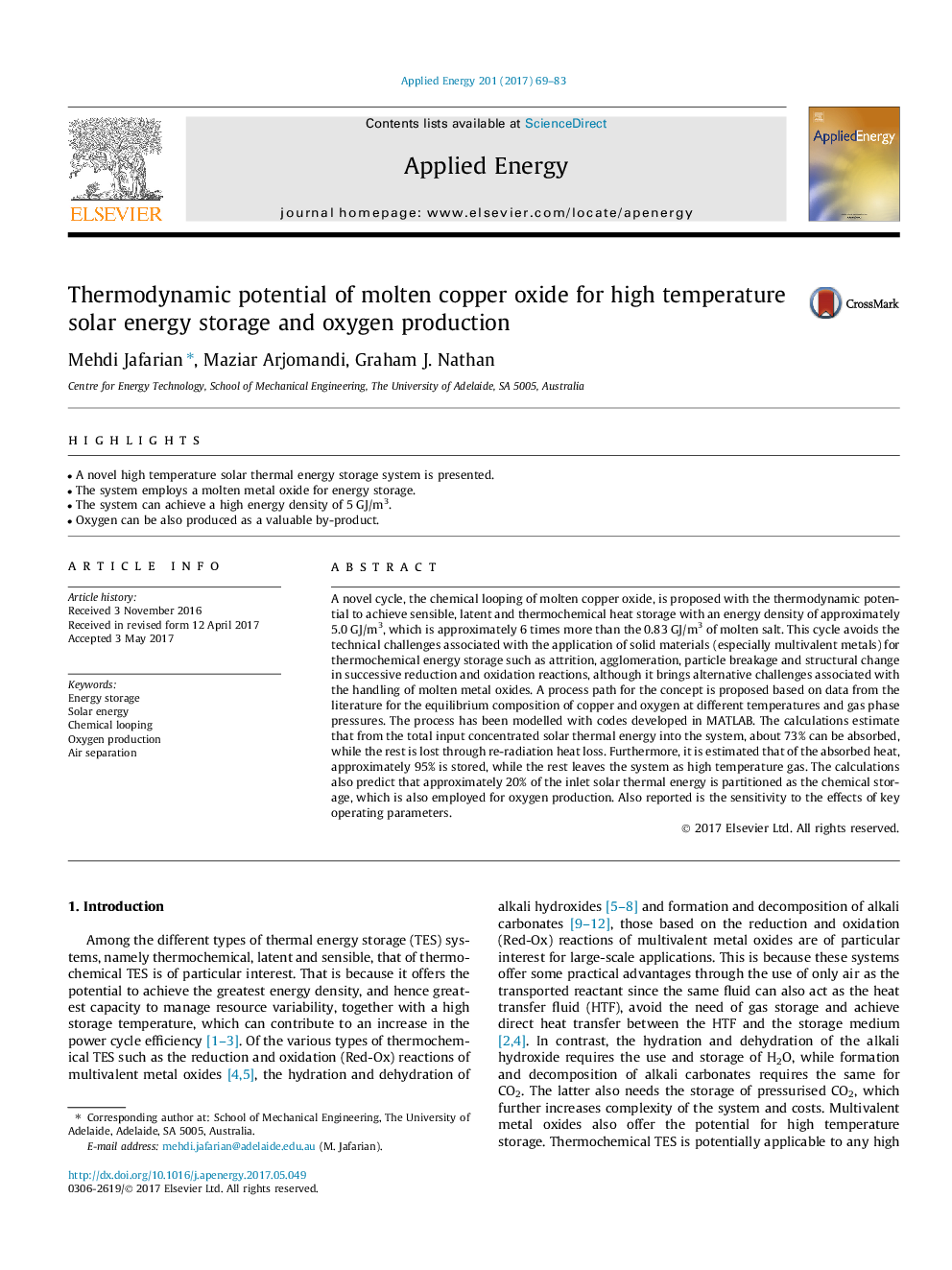| Article ID | Journal | Published Year | Pages | File Type |
|---|---|---|---|---|
| 4916003 | Applied Energy | 2017 | 15 Pages |
Abstract
A novel cycle, the chemical looping of molten copper oxide, is proposed with the thermodynamic potential to achieve sensible, latent and thermochemical heat storage with an energy density of approximately 5.0Â GJ/m3, which is approximately 6 times more than the 0.83Â GJ/m3 of molten salt. This cycle avoids the technical challenges associated with the application of solid materials (especially multivalent metals) for thermochemical energy storage such as attrition, agglomeration, particle breakage and structural change in successive reduction and oxidation reactions, although it brings alternative challenges associated with the handling of molten metal oxides. A process path for the concept is proposed based on data from the literature for the equilibrium composition of copper and oxygen at different temperatures and gas phase pressures. The process has been modelled with codes developed in MATLAB. The calculations estimate that from the total input concentrated solar thermal energy into the system, about 73% can be absorbed, while the rest is lost through re-radiation heat loss. Furthermore, it is estimated that of the absorbed heat, approximately 95% is stored, while the rest leaves the system as high temperature gas. The calculations also predict that approximately 20% of the inlet solar thermal energy is partitioned as the chemical storage, which is also employed for oxygen production. Also reported is the sensitivity to the effects of key operating parameters.
Related Topics
Physical Sciences and Engineering
Energy
Energy Engineering and Power Technology
Authors
Mehdi Jafarian, Maziar Arjomandi, Graham J. Nathan,
